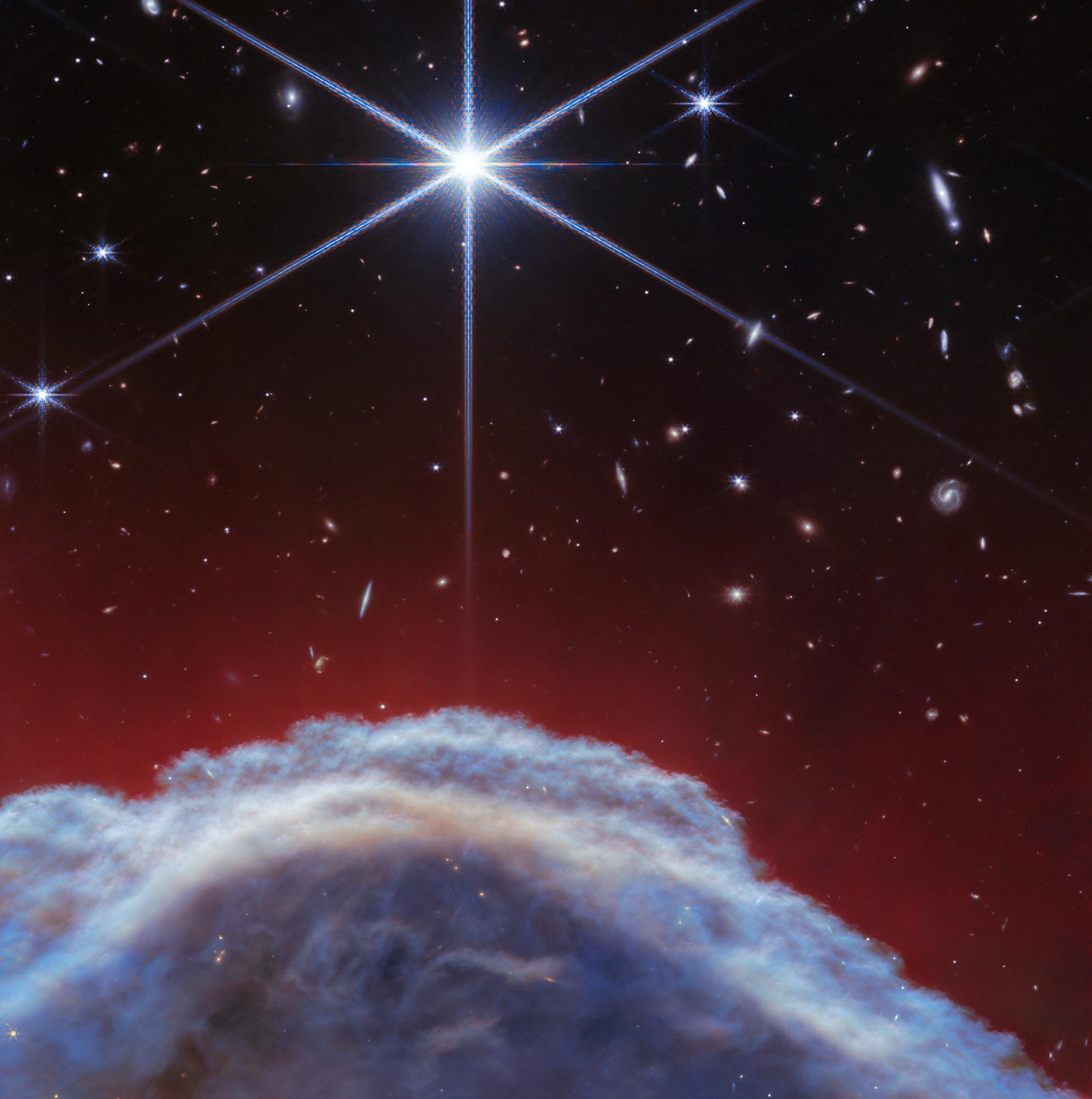Webb Captures Top of Iconic Horsehead Nebula in Unprecedented Detail

NASA’s James Webb Space Telescope has captured the sharpest infrared images to date of a zoomed-in portion of one of the most distinctive objects in our skies, the Horsehead Nebula. These observations show the top of the “horse’s mane” or edge of this iconic nebula in a whole new light, capturing the region’s complexity with unprecedented spatial resolution.
Webb’s new images show part of the sky in the constellation Orion (The Hunter), in the western side of a dense region known as the Orion B molecular cloud. Rising from turbulent waves of dust and gas is the Horsehead Nebula, otherwise known as Barnard 33, which resides roughly 1,300 light-years away.
The nebula formed from a collapsing interstellar cloud of material, and glows because it is illuminated by a nearby hot star. The gas clouds surrounding the Horsehead have already dissipated, but the jutting pillar is made of thick clumps of material and therefore is harder to erode. Astronomers estimate that the Horsehead has about five million years left before it too disintegrates. Webb’s new view focuses on the illuminated edge of the top of the nebula’s distinctive dust and gas structure.
The Horsehead Nebula is a well-known photodissociation region, or PDR. In such a region, ultraviolet (UV) light from young, massive stars creates a mostly neutral, warm area of gas and dust between the fully ionized gas surrounding the massive stars and the clouds in which they are born. This UV radiation strongly influences the chemistry of these regions and acts as a significant source of heat.
These regions occur where interstellar gas is dense enough to remain mostly neutral, but not dense enough to prevent the penetration of UV light from massive stars. The light emitted from such PDRs provides a unique tool to study the physical and chemical processes that drive the evolution of interstellar matter in our galaxy, and throughout the universe from the early era of vigorous star formation to the present day.
Due to its proximity and its nearly edge-on geometry, the Horsehead Nebula is an ideal target for astronomers to study the physical structures of PDRs and the molecular evolution of the gas and dust within their respective environments, and the transition regions between them. It is considered one of the best regions in the sky to study how radiation interacts with interstellar matter.
